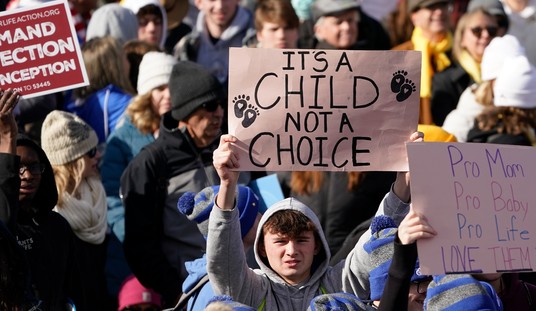The administration is expanding a Federal bailout program to allow those deeper “underwater” to refinance with Freddie Mac and Fannie Mae. While the program is supposed to help out homeowners facing foreclosures, critics have called it an expansion of the disastrous subprime loan program. The Wall Street Journal describes the refinancing scheme:
Strapped borrowers with mortgages worth up to 125% of their home’s value will now be eligible to refinance under the program, as long as they are not behind on their payments. Currently, the program caps eligibility at a loan-to-value ratio of 105%.
In addition, mortgage finance companies Fannie Mae and Freddie Mac said they would offer incentives to lenders to encourage certain underwater borrowers with 30-year fixed-rate mortgages to refinance into shorter-term loans.
Department of Housing and Urban Development Secretary Shaun Donovan announced the new higher loan-to-value limit while touring a foreclosure-ridden neighborhood of Las Vegas, with Senate Majority Leader Harry Reid (D., Nev.) and Rep. Dina Titus (D., Nev.).
The move is aimed at helping homeowners who have been unable to refinance into lower-rate mortgages because their homes have plummeted in value. But the effort could be hampered by rising mortgage rates.
However the Business Insider criticized the move, saying that “before your LTV ratio could only be 105%, because, well, as we’ve learned, fat loans relative to value are more likely to go bad. As many have described it, Obama’s solution to the housing crisis is: more subprime loans. Like the original subprime loans, they’re really only going to work out if home prices grow rapidly over the next few years, otherwise you’re looking at the perpetuation of people living underwater in their homes.”
The program’s expansion had already been rumored. Housing Wire in an article written a week ago, said that rising rates created a situation where those who needed it most were not qualifying for assistance. “Critics for months have said the LTV limit will not reach the borrowers who need it most — those who purchased more than three years ago, with little money down and when house prices hit a peak. And with mortgage rates edging back up in recent weeks from historic lows, refinancing in general for those who do qualify is growing difficult.” However, another Housing Wire article said that the real reason refinancing rates were down was that the refinance companies themselves had downsized so much that capacity problems were holding things back more than the number of qualified applicants.
the problem might lie not with the fundamentals of the refi program, but with the originators involved in facilitating refinancings, according to analysts: “A combination of reduction in the mortgage industry workforce coupled with funding shortfalls for non-bank lenders has hampered origination capacity versus the capacity in 2003.”
For instance, borrowers considered to be in the highest tier for refinance — FICO greater than 740 and current LTV less than 80% — are prepaying at about 45% CPR compared with 60% in the ‘03 refinance wave.
The capacity issues hampering originators’ efforts to push refinancings through the pipeline are also affecting modification efforts, the report concluded.
“There was no significant pick up in modification activity across various servicers this month,” analysts noted. “We believe that servicers are facing logistical hurdles in transitioning to the new MHA program. Furthermore, it will take some time for the loan modifications under the MHA program to appear in the remittance data because a modification under the MHA becomes permanent only after 3-month trial period.”
The news comes at a time when Freddie Mac and Fannie Mae were receiving large infusions of government money to stay afloat. The South Florida Business Journal says,
Mortgage giant Freddie Mac received $6.1 billion from the Treasury Department Tuesday to cover its first quarter shortfall, the company reported in a securities filing Wednesday. … Freddie Mac, and its government-sponsored sibling Fannie Mae, were put under federal conservatorship in September.
Freddie has thus far drawn on $50.7 billion from the Treasury. Fannie Mae has drawn $34.2 billion.
Both agencies had been previously described as “too big to fail”.










Join the conversation as a VIP Member